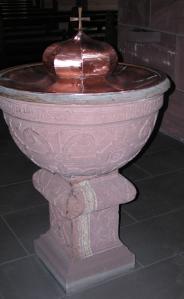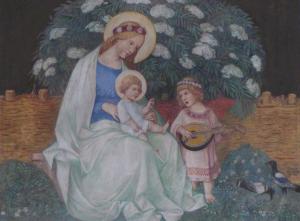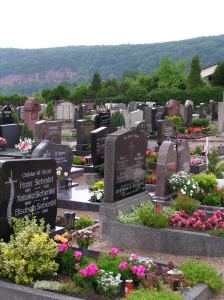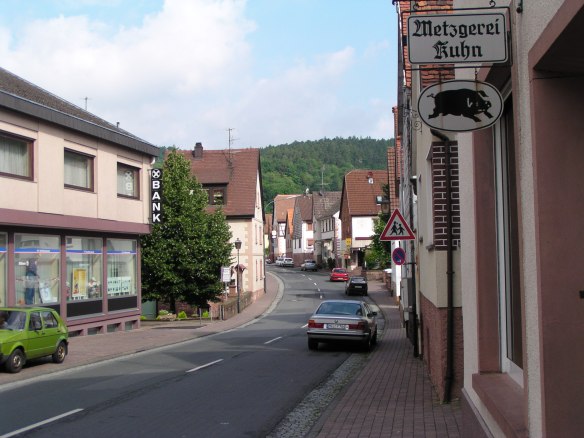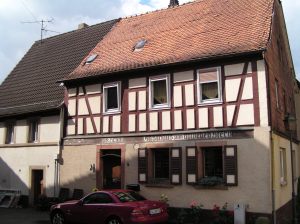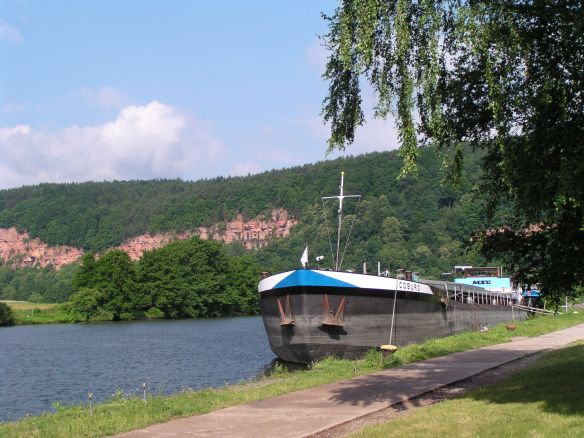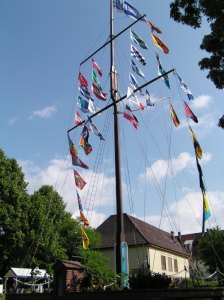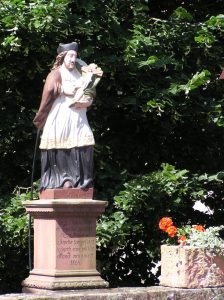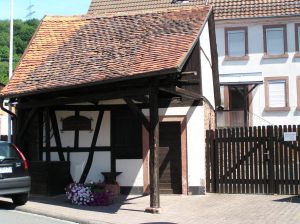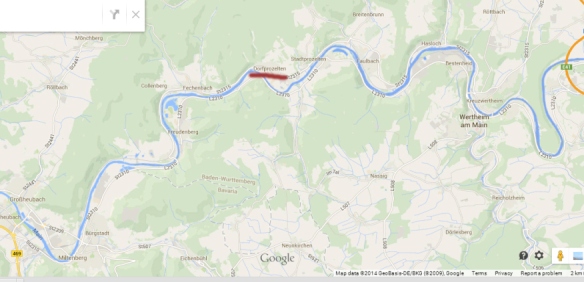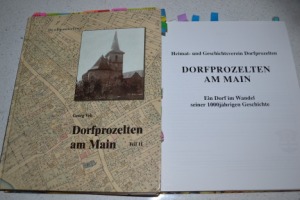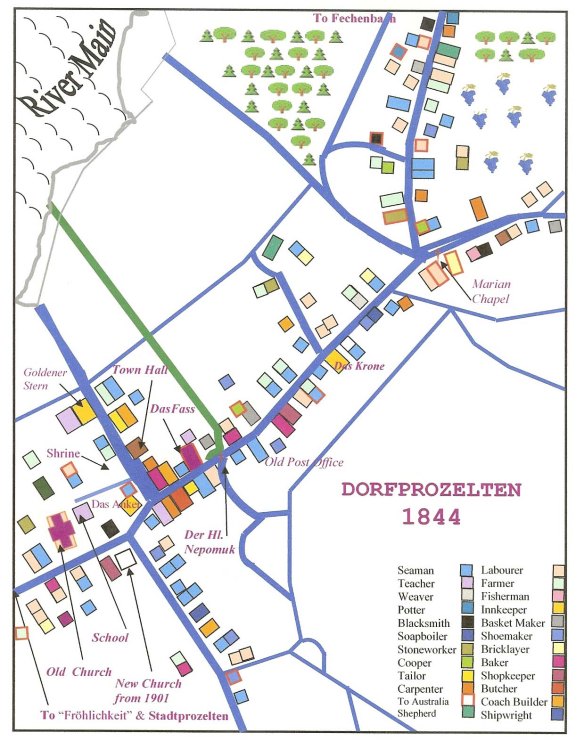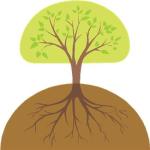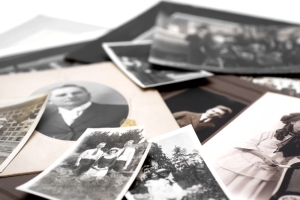Georg Günzer was born in Dorfprozelten, Bavaria on 23 April 1821. He was the illegitimate son of Margaretha Günzer (b 1793 d 1854) and Johannes Kuhn (b1782 d 1853). Georg was brother to Dominicus Kuhn an immigrant under the vinedresser Bounty scheme, who arrived with his children in Sydney on the Peru on 23 May 1855, his wife having died on the voyage.[1] As a single man, Georg Günzer, 35 years old, was not a government-assisted immigrant. He arrived on board the Johann Cesar on 8 February 1856, listing his occupation as a shepherd, for which he had probably signed a contract prior to departure. On the Board Immigration Lists his surname looks like “Geineur” but Hamburg lists are clearer and confirm his birthplace.[2]
Although Georg Günzer was single when he emigrated, he left behind two illegitimate children in Mondfeld, Baden. The costs and complexity of the marriage regulations at the time made illegitimacy a common occurrence. The children’s mother was Barbara Theresia Goldschmidt of Mondfeld. It is thought she probably died when the children were young or they would not have been permitted to emigrate. Anna Günzer 14,and Anton Günzer or Goldschmitt 8, emigrated in 1862 and were accompanied by Hildegardis Hock from Dorfprozelten. They travelled on the La Rochelle, landing at Moreton Bay on 2 August 1862.[3]
Shortly after his children’s arrival, Georg Günzer married Hildegardis Hock on 19 August 1862 at St Luke’s Anglican Church in Toowoomba.[4] The certificate confirms that Georg Günzer was then working at Westbrook as a shepherd. One of the witnesses to the marriage was John Hock, probably the same person who travelled on the Commodore Perry. John Hock was married to another Dorfprozelten person, Clara Günzer, who was Georg Günzer’s cousin. Although the couple married in the Anglican church there is little doubt that Georg and Hildegardis were both Catholic. Perhaps the presence of Georg’s two earlier children was more than the Irish Catholic priests could cope with, though the situation was more accepted in the German cultural system. Alternatively the Anglican minister was simply the first one available to enable the couple to marry quickly. After settling in Australia the Günzer name quickly morphed to Gunzer and later to Ganzer.
George and Hildegard continued to live at Westbrook for a while. Their first son was born there though later children were born in Toowoomba. George and Hildegard had the following children:
- John Günzer born Westbrook 19 February 1864 (indexed as Ginser)
- Christopher Günzer born 9 August 1866 in Toowoomba
- George Günzer born 16 March 1869 died as an infant on 19 June 1869
- Mary Agnes Günzer born 17 April 1870 in Toowoomba
George Günzer owned subdivision 1 of portion 164, parish of Drayton but Hildegard and Anna also received land grants as part of their migration entitlements. The first land orders appear to have been transferred to the business of “Heussler and Franken”, probably in lieu of the family’s voyage costs, but it is not yet clear whether they used the second land order to purchase land themselves or whether they sold the orders to someone else. The Ganzer property is believed to have been in the vicinity of Ganzers Road near Gowrie Junction on the Darling Downs.

Westbrook, Darling Downs ; Sketch of “Westbrook” homestead by Elizabeth Hume, property of John Douglas Maclean and William Beit, near Toowoomba, n.d.
Hume Family Collection, UQFL10, Album 1, Page 108. Out of copyright.
George Günzer died on 30 October 1871 and his father’s name is stated as John Günzer (actually John Kuhn). The new online indexes for Queensland state he was born in Bavaria and was aged 50 years.[5] He was buried in Drayton and Toowoomba cemetery on 1 November 1871.[6]As was common at the time, his widow Hildegardis remarried quite quickly. She married Franz Bodmann, a farmer from Murphy’s Creek, on 17 April 1872 at St Patrick’s Catholic Church in Toowoomba. Franz was a bachelor, aged 33, born Giaboldehausen, Hanover, Germany. His parents were Carl Bodmann (no occupation) and Regina Bodmann. Hildegard is confirmed as the daughter of Peter Huck (actually Hock), boatman, and Maria Magdalena Müller. She was then 43 and had been born in Dorfbrützelten (sic). The witnesses were Peter Reiss from Hansau,[7] Bavaria and Andrew Diflo who was married to another Dorfprozelten woman, Juliana Löhr. The priest was Father Robert Dunne.[8]
After Hildegard re-married she moved to the Fifteen Mile near Murphy’s Creek, where their next-door neighbour was George Kunkel (my ancestor), who was six years younger than her and grew up with her in Dorfprozelten, so it is evident that these emigrants maintained their links over time. In later years the Ganzer children would purchase properties in the same area and all these families would socialise together. George Kunkel’s grand-daughter, Anne Kunkel, remembered “there was that Mr Bodmann ….He planted fruit trees all along the creek banks out there. Marvellous what they did, how they planted the things. There were fruit trees everywhere. Gradually they were chopped down.”[9]
Hildegard Bodmann died on 26 March 1908 in her 80th year and was buried in the Drayton and Toowoomba cemetery.[10] Even in death the German families maintained their links, with Diflo and Bodmann graves in sight of each other. Franz Bodmann was buried in Lutwyche cemetery in Brisbane on 10 November 1916, aged 78 years.
Anna Günzer, aged 14 on arrival, was born at Mondfeld at 11pm on 14 August 1848 and baptised on the next day at 3pm.[11] Her father Georg Günzer accepted paternity on 20 March 1849. Georg was then was a Royal Bavarian soldier and single. The witnesses to the paternity declaration were Professor in Wertheim, Michael Joseph Oehling and Franz Joseph Burckard, schoolteacher in Boxtal. The mother, father, priest and witnesses all signed the declaration.[12] Even though Anna herself later considered her mother to be Hildegard Günzer, these records clearly demonstrate that she was not her birth mother. Anna married Heinrich Volp (indexed as Folp) on 5 August 1865, in Toowoomba. Anna was a servant, born c1848, and her parents were stated as George Gunzer and Hildegard Hak.[13] Heinrich Volp was a labourer/farmer from Freidberg Hesse (b~1836). He arrived in Moreton Bay c1854, probably on the barque Aurora, which foundered in Moreton Bay on arrival. The couple followed the Lutheran religion so Anna presumably converted on her marriage, one of the rare instances of a change of religion among the Dorfprozelten immigrants. The Volps were early settlers in the Highfields area of the Darling Downs. They had 13 children, one of whom (George Volp) was awarded a Military Medal during World War I.
Anton Günzer, aged 8 on arrival, was born to Barbara Theresia Goldschmitt in Mondfeld at 7am on 3 December 1853 and baptised at 1pm the same day.[14] He was difficult to trace originally but it has now been established that Anton changed his name to John Ganzer, making matters very confusing as there were then two John Ganzers, with the same father but different mothers. John (aka Anton) Ganzer married Elizabeth Ann Fry in a Catholic ceremony on 31 January 1875 at Nive Downs Saw Mill (between Charleville and Tambo), North Warrego, Queensland. John was a carrier, 22, born in Bavaria. His father was George Ganzer, a farmer, but no mother was named.[15] They had at least three children: George Henry Ganzer, Emma Ganzer, and John Thomas Ganzer. John Ganzer died on 24 March 1890, only 37 years old,[16] and was buried in the Rockhampton Cemetery on 25 March 1890.
[1] State Records of NSW (SRNSW), Persons on Bounty ships to Sydney, Newcastle and Moreton Bay 1848-1866, CGS 5317, microfilm 2471, reference 4/4953.
[2] State Records of NSW (SRNSW), Persons on Bounty ships to Sydney, Newcastle and Moreton Bay 1848-1866, CGS 5317, microfilm 2473, reference 4/4961.
[3] Anton’s surname is listed as Goldschmitt on a Baden website: http://www.auswanderer-bw.de
[4] This certificate was very kindly provided by Suzanne Wacker. Qld BDM C000048 indexed as Grinzer.
[5] http://www.justice.qld.gov.au/bdm/IndexSearch.htm. Qld BDM ref 1871/C000205.
[6] George Gunzer buried RC unknown section, grave A681, indexed as Gaynor.
[7] Peter Reis was married to Rose Margaret Hock, daughter of John & Clara/Rosina Hock.
[8] #58 RC Church Toowoomba 17 Sept 1872. Catholic Diocesan Archives.
[9] Interview between Annie Kunkel and Cameron McKee circa 1984 transcribed Pauleen Cass 2006.
[10] RC2 block 13 allotment 70, grave F326
[11] LDS Church microfilm of Mondberg Catholic Church register on film 1044061, entry VIII on page 47 on the baptism register.
[12] Ibid page 49, entry IV½ . I am very grateful to Jenny Paterson for her translation of these records for which the script is very difficult to read.
[13] Certificate kindly provided to me by June Fitzpatrick.
[14] LDS Church microfilm of Mondberg Catholic Church register on film 1044061, entry 11 on the register for 1853.
[15] Certificate information kindly provided by Suzanne Wacker.
[16] Qld 1890/C003652. http://www.justice.qld.gov.au/bdm/IndexSearch.htm



